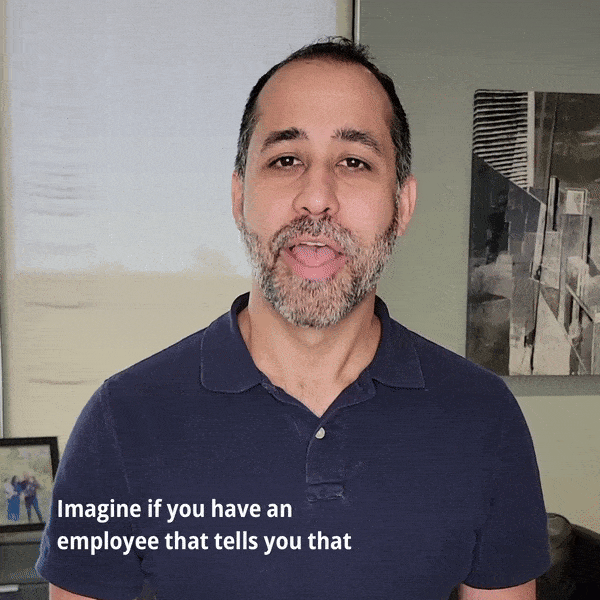Employee Performance Evaluation
If you scan through the national newspapers you will find article after article about managers and supervisors who are agonizing over the behavior of employees. Sometimes this agony is brought about by the employee’s lack of performance or sometimes by deliberate insubordination. According to The Insurance Journal nearly 90% of corporations are involved in multiple lawsuits. And many of these are brought about by a lack of due diligence with documenting employee performance.
The question begs to be asked, why are these managers or supervisors not letting these employees go? My experience has been that they are afraid of a lawsuit and the effect it will have on the business and/or their career. When you talk with them about the benefits of documentation you find that they either didn’t document or are unsure of the quality of the documentation.
Labor Boards/Courts Awarding Punitive Damages:
Labor boards and courts are siding with terminated employees more and more. They are awarding punitive damages or requiring payment of compensation in cases where the grounds for termination are not clear. Even right to work states see their fair share of litigation alleging unfair termination. The EEOC will investigate alleged Title VII violations. If an EEOC investigator even thinks that there could be a violation the matter will move forward.
What is unfortunate is that most businesses err on the side of not documenting from day one. I mediated a case for the EEOC where a customer of a small local restaurant asked for a job. This was an older woman who frequented the restaurant daily. She alleged Age Discrimination.
Accused of Deliberately Trying to Make Her Fail:
They hired her because she was “sweet” and a loyal customer. During training Loyal Customer Wannabe Employee was not able to learn how to use the computerized cash register. Her continued comments to the manager attempting to train her on the use of the register were:
• The registers that she worked on in the 60’s were better;
• She could just use a calculator to factor making change;
• No cash register could accurately determine if the food prepared by the kitchen added up to the amount of food sold;
• They were deliberately trying to make her fail because of her age.
After two weeks of trying to train Loyal Customer Wannabe Employee to use the cash register, the restaurant’s owner decided to switch her to hostess. This is a small restaurant with thirty (30) tables. The cashier helped with seating people.
It’s not nice to chuckle at the angst of those for whom you are mediating, but I couldn’t resist on this one. Loyal Customer Wannabe Employee refused to learn the seating chart or to even use the seating chart. Her reasoning:
• I know everyone who comes here and where they want to sit;
• The waitress should be able to handle however many people I seat in her section;
• I’ve been coming to this restaurant long enough to know how to seat people.
Clear ADA Accommodations Request:
The restaurant owner had a good employee handbook that his attorney had drafted. It clearly stated each job description, the training process and how to request ADA accommodations, among other things.
Moving her from cashier to hostess was a clear attempt to accommodate her inability. Had there been a true Title VII issue, Small Business Owner had, in good faith, worked to accommodate this individual.
When Restaurant Owner had to let Loyal Customer Wannabe Employee go, he was very careful in his words and had LCWE’s immediate supervisor there to validate all that was said. At first she cried asking for another chance, then she threatened a lawsuit.
Mediation of Age Discrimination:
When this came to mediation, Loyal Customer Wannabe Employee had filed a complaint alleging Age Discrimination. While she did fit the criteria, she had never asked for any accommodation. What kept this moving forward was the lack of documentation by Small Business Owner that could have adequately disputed her Age Discrimination claim.
Employee Handbook/Performance Documentation:
While they had a great employee handbook, they did not have great policy in place for workers’ performance documentation. Especially documentation during the training period. Our owner didn’t realize the importance of written policy for day to day operations that would address performance documentation.
Employee Reviews:
Many business owners, even major corporations, neglect to document employee performance adequately. Employee reviews can be useful, but ongoing little notes in an employee’s file can make the difference.
I worked on a case involving a national provider for prison healthcare. The allegations brought against them in this class action were, in part, complex issues. What brought this case relatively fast closure was the daily documentation written by supervisors, managers and co-workers. This group had put in place a system of daily performance documentation. Every day, without fail, each employee who worked that day had some type of written evaluation.
Protocol for Negative Evaluation:
If it was a negative evaluation the employee was notified within twenty-four hours and given an opportunity to respond within three (3) work days in which they actually worked.
The amount of documentation was overwhelming, but it gave us insight as to the lack of standing in the claims. Best of all, they had quarterly reviews that reinforced the daily performance reports. The yearly review was based upon all the foregoing. No employee was blindsided by a new complaint. Each employee who had performance issues had multiple documented times where the performance issue had been addressed and what the resolution had been.
Does this sound like a lot of work? In the long run it wasn’t. Most reports were one or two sentences. Some were a few words, “Excellent day!” or “Keep up the good work!” or “Love having so-and-so on my team!” When someone with exemplary comments began to underperform it was easy to spot in the record. Some of the documentation reflected problems at home or an unknown underlying anger toward a supervisor. The point is, we could read in real time what was happening.
So what happened to Small Business Owner and Loyal Customer Wannabe Employee? Lack of documentation hurt the business owner. While employees who worked with LCWE testified consistently about the problems encountered, she had a lot of anger. Because of a lack of documentation the business could not effectively defend her firing for insubordination. They could show that they had made concessions to accommodate her inability to learn the cash register by moving her into the hostess position. They did not, however, document where she had stated to co-workers and the restaurant’s owner her ongoing refusals to seat patrons according to protocol.
Documented Grounds for Termination:
This situation had nothing to do with Age Discrimination. It had everything to do with the efficient running of a business. Because there was no ongoing documentation of the infractions, Small Business Owner could offer no documented clear grounds for termination beyond he said she said.
In meeting with the owner and several co-workers, they personally liked Loyal Customer Wannabe Employee. Each one felt badly that she couldn’t learn how to use the cash register. Each one was frustrated that she refused to follow seating protocol and the difficulties that created when the restaurant was at peak performance.
Ongoing Documentation Accepted by EEOC:
In the end Loyal Customer Wannabe Employee was offered several hundred dollars in gift cards to this restaurant – after all it was her “favorite place to eat and meet her friends.” She accepted.
A year later I checked in on Small Business Owner to see how things were going. LCWE was still happily dining there on a daily basis. Best of all, Small Business Owner had worked with his attorney to draft AND implement an ongoing review protocol. With the protocol in place he had recently had to let go an employee for continued tardiness. Because of the ongoing documentation, when the EEOC contacted him with allegations of discrimination, he was able to produce the necessary proof for the EEOC to dismiss the allegations. When the employee went to an attorney to sue privately, Small Business Owner produced the documentation and the suit was dropped.
As a business owner you should have a very detailed employee handbook. But you should also have a very detailed operations manual that clearly sets forth protocol for performance documentation. Ignoring performance documentation can open the door to a lawsuit. Careful and consistent ongoing documentation can give you all you need to quash a potential lawsuit. So work with a trusted, experienced attorney and document, document, document!


![Return to the Office vs. Remote: What Can Employers Legally Enforce? [e321]](https://www.pashalaw.com/wp-content/uploads/2023/01/Pasha_LSSB_321_banner-1024x723.jpg)









![Law in the Digital Age: Exploring the Legal Intricacies of Artificial Intelligence [e323]](https://www.pashalaw.com/wp-content/uploads/2023/11/WhatsApp-Image-2023-11-21-at-13.24.49_4a326c9e-300x212.jpg)
![Unraveling the Workforce: Navigating the Aftermath of Mass Layoffs [e322]](https://www.pashalaw.com/wp-content/uploads/2023/07/Untitled-design-23-300x212.png)
![Return to the Office vs. Remote: What Can Employers Legally Enforce? [e321]](https://www.pashalaw.com/wp-content/uploads/2023/01/Pasha_LSSB_321_banner-300x212.jpg)
![Explaining the Hans Niemann Chess Lawsuit v. Magnus Carlsen [e320]](https://www.pashalaw.com/wp-content/uploads/2022/10/LAWYER-EXPLAINS-7-300x169.png)
![California v. Texas: Which is Better for Business? [313]](https://www.pashalaw.com/wp-content/uploads/2021/07/Pasha_LSSB_CaliforniaVSTexas-300x212.jpg)
![Buyers vs. Sellers: Negotiating Mergers & Acquisitions [e319]](https://www.pashalaw.com/wp-content/uploads/2022/06/Pasha_LSSB_BuyersVsSellers_banner-300x212.jpg)
![Employers vs. Employees: When Are Employment Restrictions Fair? [e318]](https://www.pashalaw.com/wp-content/uploads/2022/05/Pasha_LSSB_EmployeesVsEmployers_banner-1-300x212.jpg)
![Vaccine Mandates Supreme Court Rulings [E317]](https://www.pashalaw.com/wp-content/uploads/2022/02/WhatsApp-Image-2022-02-11-at-4.10.32-PM-300x212.jpeg)
![Business of Healthcare [e316]](https://www.pashalaw.com/wp-content/uploads/2021/11/Pasha_LSSB_BusinessofHealthcare_banner-300x212.jpg)
![Social Media and the Law [e315]](https://www.pashalaw.com/wp-content/uploads/2021/10/WhatsApp-Image-2021-10-06-at-1.43.08-PM-300x212.jpeg)
![Defining NDA Boundaries: When does it go too far? [e314]](https://www.pashalaw.com/wp-content/uploads/2021/09/Pasha_LSSB_NDA_WordPress-2-300x212.jpg)
![More Than a Mistake: Business Blunders to Avoid [312] Top Five Business Blunders](https://www.pashalaw.com/wp-content/uploads/2021/06/Pasha_LSSB_Blunders_WP-1-300x212.jpg)
![Is There a Right Way to Fire an Employee? We Ask the Experts [311]](https://www.pashalaw.com/wp-content/uploads/2021/02/Pasha_LSSB_FireAnEmployee_Website-300x200.jpg)
![The New Frontier: Navigating Business Law During a Pandemic [310]](https://www.pashalaw.com/wp-content/uploads/2020/12/Pasha_LSSB_Epidsode308_Covid_Web-1-300x200.jpg)
![Wrap Up | Behind the Buy [8/8] [309]](https://www.pashalaw.com/wp-content/uploads/2020/11/Pasha_BehindTheBuy_Episode8-300x200.jpg)
![Is it all over? | Behind the Buy [7/8] [308]](https://www.pashalaw.com/wp-content/uploads/2020/09/iStock-1153248856-overlay-scaled-300x200.jpg)
![Fight for Your [Trademark] Rights | Behind the Buy [6/8] [307]](https://www.pashalaw.com/wp-content/uploads/2020/07/Fight-for-your-trademark-right-300x200.jpg)
![They Let It Slip | Behind the Buy [5/8] [306]](https://www.pashalaw.com/wp-content/uploads/2020/06/Behind-the-buy-they-let-it-slip-300x200.jpg)
![Mo’ Investigation Mo’ Problems | Behind the Buy [4/8] [305]](https://www.pashalaw.com/wp-content/uploads/2020/05/interrobang-1-scaled-300x200.jpg)
![Broker or Joker | Behind the Buy [3/8] [304] Behind the buy - Broker or Joker](https://www.pashalaw.com/wp-content/uploads/2020/04/Joker-or-Broker-1-300x185.jpg)
![Intentions Are Nothing Without a Signature | Behind the Buy [2/8] [303]](https://www.pashalaw.com/wp-content/uploads/2020/04/intentions-are-nothing-without-a-signature-300x185.jpg)
![From First Steps to Final Signatures | Behind the Buy [1/8] [302]](https://www.pashalaw.com/wp-content/uploads/2020/04/first-steps-to-final-signatures-300x185.jpg)
![The Dark-side of GrubHub’s (and others’) Relationship with Restaurants [e301]](https://www.pashalaw.com/wp-content/uploads/2015/04/When-Competition-Goes-Too-Far-Ice-Cream-Truck-Edition-300x201.jpg)
![Ultimate Legal Breakdown of Internet Law & the Subscription Business Model [e300]](https://www.pashalaw.com/wp-content/uploads/2019/05/Ultimate-Legal-Breakdown-of-Internet-Law-the-Subscription-Business-Model-300x196.jpg)
![Why the Business Buying Process is Like a Wedding?: A Legal Guide [e299]](https://www.pashalaw.com/wp-content/uploads/2019/03/futura-300x169.jpg)
![Will Crowdfunding and General Solicitation Change How Companies Raise Capital? [e298]](https://www.pashalaw.com/wp-content/uploads/2018/11/Will-Crowdfunding-and-General-Solicitation-Change-How-Companies-Raise-Capital-300x159.jpg)
![Pirates, Pilots, and Passwords: Flight Sim Labs Navigates Legal Issues (w/ Marc Hoag as Guest) [e297]](https://www.pashalaw.com/wp-content/uploads/2018/07/flight-sim-labs-300x159.jpg)
![Facebook, Zuckerberg, and the Data Privacy Dilemma [e296] User data, data breach photo by Pete Souza)](https://www.pashalaw.com/wp-content/uploads/2018/04/data-300x159.jpg)
![What To Do When Your Business Is Raided By ICE [e295] I.C.E Raids business](https://www.pashalaw.com/wp-content/uploads/2018/02/ice-cover-300x159.jpg)
![General Contractors & Subcontractors in California – What you need to know [e294]](https://www.pashalaw.com/wp-content/uploads/2018/01/iStock-666960952-300x200.jpg)
![Mattress Giants v. Sleepoplis: The War On Getting You To Bed [e293]](https://www.pashalaw.com/wp-content/uploads/2017/12/sleepopolis-300x159.jpg)
![The Harassment Watershed [e292]](https://www.pashalaw.com/wp-content/uploads/2017/12/me-2-300x219.jpg)
![Investing and Immigrating to the United States: The EB-5 Green Card [e291]](https://www.pashalaw.com/wp-content/uploads/2012/12/eb-5-investment-visa-program-300x159.jpg)
![Responding to a Government Requests (Inquiries, Warrants, etc.) [e290] How to respond to government requests, inquiries, warrants and investigation](https://www.pashalaw.com/wp-content/uploads/2017/10/iStock_57303576_LARGE-300x200.jpg)
![Ultimate Legal Breakdown: Employee Dress Codes [e289]](https://www.pashalaw.com/wp-content/uploads/2017/08/Ultimate-Legal-Breakdown-Template-1-300x159.jpg)
![Ultimate Legal Breakdown: Negative Online Reviews [e288]](https://www.pashalaw.com/wp-content/uploads/2017/06/Ultimate-Legal-Breakdown-Online-Reviews-1-300x159.jpg)
![Ultimate Legal Breakdown: Social Media Marketing [e287]](https://www.pashalaw.com/wp-content/uploads/2017/06/ultimate-legal-breakdown-social-media-marketing-blur-300x159.jpg)
![Ultimate Legal Breakdown: Subscription Box Businesses [e286]](https://www.pashalaw.com/wp-content/uploads/2017/03/ultimate-legal-breakdown-subscription-box-services-pasha-law-2-300x159.jpg)
![Can Companies Protect Against Foreseeable Misuse of Apps [e285]](https://www.pashalaw.com/wp-content/uploads/2017/01/iStock-505291242-300x176.jpg)
![When Using Celebrity Deaths for Brand Promotion Crosses the Line [e284]](https://www.pashalaw.com/wp-content/uploads/2017/01/celbrity-300x159.png)
![Are Employers Liable When Employees Are Accused of Racism? [e283] Racist Employee](https://www.pashalaw.com/wp-content/uploads/2016/12/Are-employers-liable-when-an-employees-are-accused-of-racism-300x159.jpg)
![How Businesses Should Handle Unpaid Bills from Clients [e282] What to do when a client won't pay.](https://www.pashalaw.com/wp-content/uploads/2016/12/How-Businesses-Should-Handle-Unpaid-Bills-to-Clients-300x159.png)
![Can Employers Implement English Only Policies Without Discriminating? [e281]](https://www.pashalaw.com/wp-content/uploads/2016/11/Can-Employers-Impliment-English-Only-Policies-Without-Discriminating-300x159.jpg)
![Why You May No Longer See Actors’ Ages on Their IMDB Page [e280]](https://www.pashalaw.com/wp-content/uploads/2016/10/IMDB-AGE2-300x159.jpg)
![Airbnb’s Discrimination Problem and How Businesses Can Relate [e279]](https://www.pashalaw.com/wp-content/uploads/2016/09/airbnb-300x159.jpg)
![What To Do When Your Amazon Account Gets Suspended [e278]](https://www.pashalaw.com/wp-content/uploads/2016/09/What-To-Do-When-Your-Amazon-Account-Gets-Suspended-1-300x200.jpg)
![How Independent Artists Reacted to Fashion Mogul Zara’s Alleged Infringement [e277]](https://www.pashalaw.com/wp-content/uploads/2016/08/How-Independent-Artists-Reacted-to-Fashion-Mogul-Zaras-Alleged-Infringement--300x159.jpg)
![Can Brave’s Ad Replacing Software Defeat Newspapers and Copyright Law? [e276]](https://www.pashalaw.com/wp-content/uploads/2016/08/Can-Braves-Ad-Replacing-Software-Defeat-Newspapers-and-Copyright-Law-300x159.jpg)
![Why The Roger Ailes Sexual Harassment Lawsuit Is Far From Normal [e275]](https://www.pashalaw.com/wp-content/uploads/2016/07/WHY-THE-ROGER-AILES-SEXUAL-HARASSMENT-LAWSUIT-IS-FAR-FROM-NORMAL-300x159.jpeg)
![How Starbucks Turned Coveted Employer to Employee Complaints [e274]](https://www.pashalaw.com/wp-content/uploads/2016/07/iStock_54169990_LARGE-300x210.jpg)
